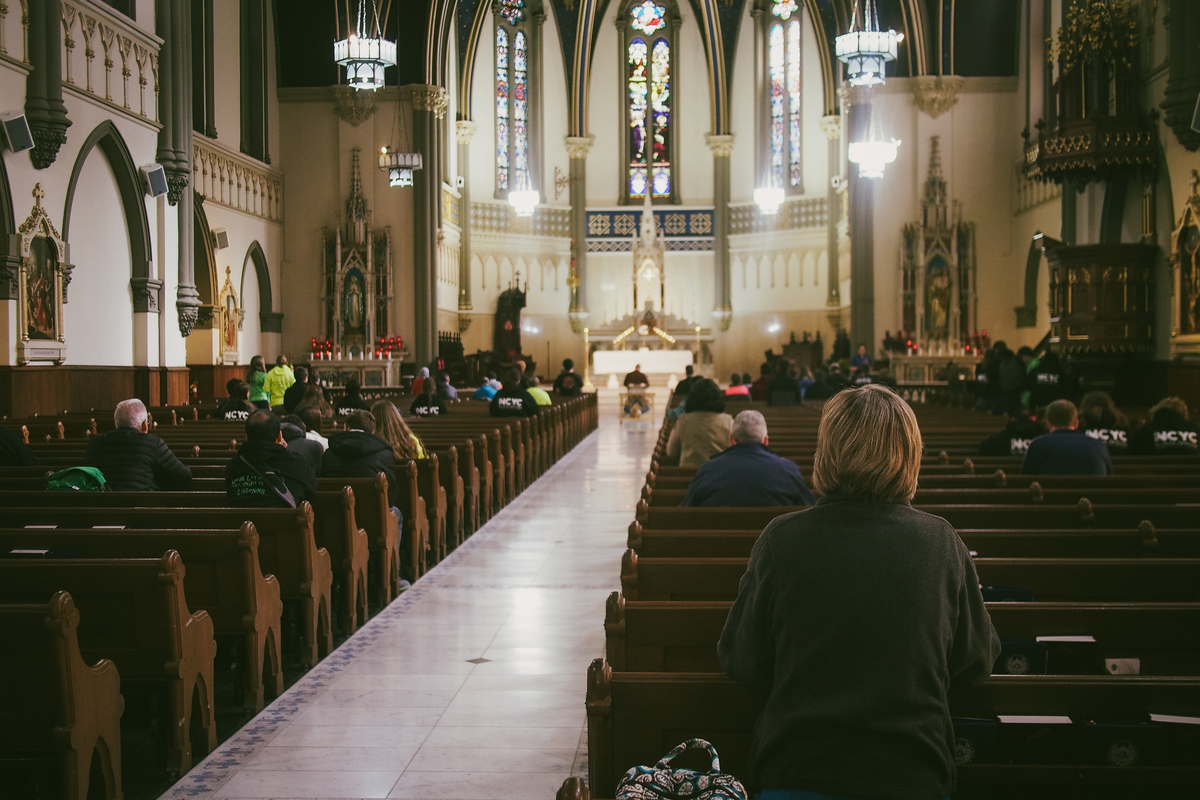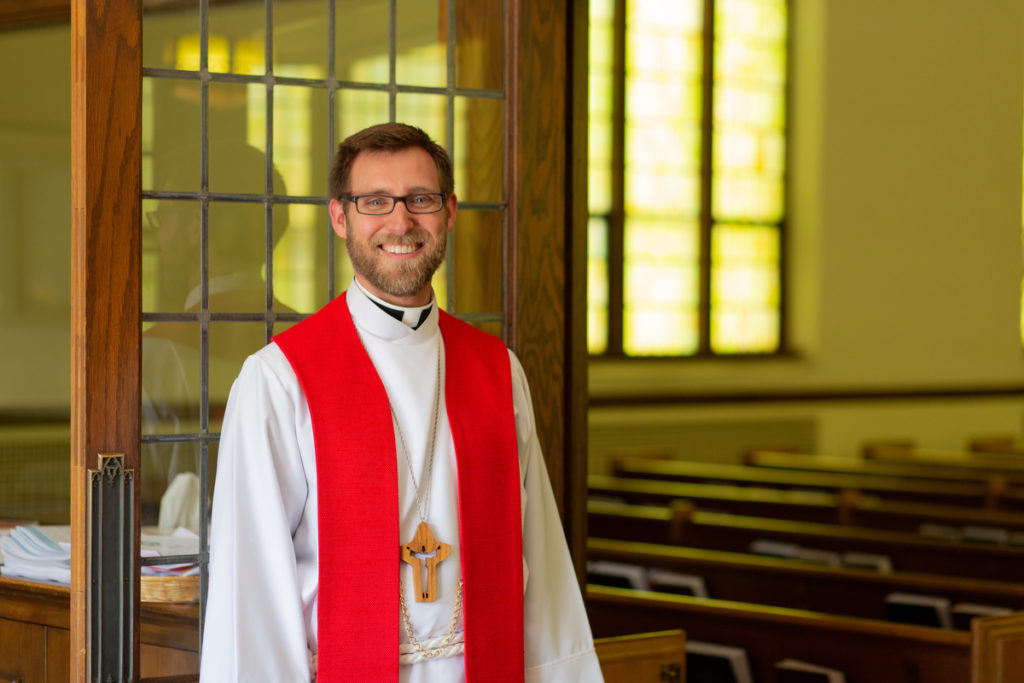Many of you know that I write intercessory prayers that are posted on the Lutheran CORE website and sent to many individual pastors and congregations. I’ve done this for over 10 years, motivated to improve on clunky, theologically weak, or odd prayers provided by various resources. Additionally, pastors and laity charged with leading intercessory prayers are often terrified by the prospect of “winging it” or writing prayers every week, and appreciate good resources. Occasionally, pastors repurpose their sermons in the guise of intercessory prayers –advising God to help parishioners get the point made earlier, expand on it, and Just Do It. Laity (and some pastors, especially in informal settings) often want prayers to be plainspoken and down to earth. That’s a laudable goal not well served by a “Lord Father God I just wanna” style! Finally, when left to our own devices, we sinners focus on Us, Ourselves, and We, rather than “the Church, the world, and all people according to their need.”
I have taught sessions on intercessory prayer at several Society of the Holy Trinity (STS) local retreats, and in congregational study groups. I want to share some of what I’ve learned and taught, in two articles. Because I’m drawing from notes used for those presentations, there aren’t any formal citations in this article. However, I drew from three major works on liturgy: by Dom Gregory Dix (The Shape of the Liturgy), Luther Reed (The Lutheran Liturgy), and Frank Senn (Christian Liturgy: Catholic and Evangelical).
In this month’s article, let’s begin with some historical background. Many elements of first-century synagogue worship were retained by the early Church. The whole pre-communion liturgy –Scripture (including Old Testament), psalms and other hymns, exposition, prayers, and benediction – retain the shape of worship that would have been familiar to Jesus and his disciples. As the Church spread and developed, there were local peculiarities but unity in the essential parts of the liturgy. With regard to intercessory prayers, an early church father, Cyprian, detailed the solemn need to pray for the Church, catechumens, penitents, the emperor, magistrates, those in affliction, travelers, prisoners, and any local concerns.
Intercessory prayers were dubbed “The Prayer of the Faithful.” Following a sermon or other exhortation, and after short prayers for catechumens (who then left for instruction), the faithful would continue in intercessory prayer. As the Body of Christ, the faithful prayed to the Father, in Christ’s name (more, in his person, as his Body), by the power of the Spirit. Like the recitation of the Creed and Lord’s Prayer and the reception of Holy Communion, these public, intercessory prayers were therefore only for the baptized.
Here’s how Gregory Dix explains that.
“The church is the Body of Christ and prays ‘in the name of’ Jesus, i.e. according to the Semitic idiom which underlies the phrase, ‘in his person.’ The Spirit of adoption whereby the church cries to God in Christ’s Name, ‘Abba, Father’ with the certainty of being heard, ‘Himself makes intercession’ with her prayers. The world had a right to hear the gospel; but those who have not yet ‘put on Christ’ by baptism and thus as ‘sons’ received his Spirit by confirmation cannot join in offering that prevailing prayer. All who had not entered the order of the laity were therefore without exception turned out of the assembly after the sermon.
Now this notion was a revelation to me! All the baptized participate in one of the “orders” of the Church. An “order” might be described as a recognizable “group identity” based not in race, gender, or class, but in “priestly role in worship as part of the Body of Christ.” These orders included laity, deacons, and priests/bishops. This “priesthood of the baptized” gives each order its proper role in all aspects of worship, perhaps most prominently in the Prayers of the Church. Some of that sense is lost when only the priest or pastor prays, and the laity are reduced to saying “Amen!”
In fact, deacons were especially important in prayer – the Prayers of the Church were sometimes called “the deacon’s prayer.” The deacon spoke on behalf of all the people, whose participation and responses in these prayers were critical.
Certain types of public intercessory prayer explicitly featured all three “orders” – laity, deacons, and priest, each with their role. You’ve probably prayed “the bidding prayer” on Good Friday. It’s one of few remaining vestiges of a once-common family of bidding-type prayers. These were important in East, and recovered by Reformation churches. The laity are instructed by the presiding minister to kneel. The priest/pastor announces the “bid” – the topic, such as “The poor, the sick, our enemies, the government,” and so on. There is silence for private, personal prayer by each person, for each “bid.” Kneeling was the posture of private prayer. The people rise to their feet as the deacon prays a collect (pronounced COLL-ekt) for each bid. I’ll talk in more detail about collects in the next installment of this work. Why did the people stand at this point? Because just as the deacon’s Collect “collected” the thoughts, privately offered up by many pray-ers, into one prayer, so also the deacon “collected” all of those individual pray-ers together as the Body of Christ, offering up prayer as one body. The people stood to indicate that now they were participating in the prayer of the whole body, as the one Body. The priest often finished the Bidding Prayer with one final collect.
Over time, the Western and Eastern Churches diverged in language and liturgy, including prayer. In the Eastern Orthodox churches, prayers were long and poetic. They touched on virtually every station of human life. The role of the deacon and laity were emphasized in the liturgical intercessory prayers. The Western Church derived much of its style from its ancient Roman roots. It tended to be polished and pithy rather than wordy and poetic! The deacon’s role was greatly reduced, often because the intercessory prayers were scattered through several portions of the Mass. Primers were published – devotional prayers to be read by the laity during Mass while the priest read the Latin service. This at least acknowledged the deep need for the laity to offer their “priestly sacrifice of prayer,” but it reduced it to personal, private devotions rather than as an intentional offering of the Body of Christ.
Northern Europe in the late Middle Ages, and into Reformation era, retained and developed the “general prayer” or “prayer of the faithful” through something called “Prone.” After the sermon but before Communion, and in the vernacular (unlike the liturgy done in Latin), occurred a Collect, the Creed, the Lord’s Prayer, occasionally the Decalogue, sometimes a brief form of corporate confession and absolution, intercessions for the living and the faithful departed, announcements of the banns, parish notes, etc. Lutheran reformers were relatively conservative in altering the Mass. They retained a form of Prone, often by means of a formulaic General Prayer (prayed by the pastor) between the sermon and the offertory, preceded by Creed and concluded by Lord’s Prayer, all spoken by the people.
Lutherans also re-introduced frequent use of litanies. A common form is used in Evening Prayer, but there’s a longer one called The Great Litany that can be a stand-alone intercessory prayer, chanted by the deacon or assisting minister with chanted responses by the people.
However, Lutherans and Anglicans for many decades often replaced the classic form of intercession or litanies by a “General Prayer” led by the pastor. This could be broken down into individual “chunks,” with the congregation saying “Amen” or “Hear our prayer” after each section, but the role of the laity in public intercessory prayer was being obscured, leaving laity only with whatever private devotional prayer they chose to indulge in. As Luther Reed noted: “18th-century Pietism failed to distinguish between the personal, subjective prayer of the individual Christian and the objective common prayer of the assembled worshippers, or church prayer proper. Rationalism lost all right conceptions of the Church and of prayer alike!”
In the last 75 years, there have been liturgical reforms (sometimes unfortunately followed, in my opinion, by liturgical malpractice!). An assisting minister often takes on a diaconal role. The intercessory prayers may properly be done by that person, with pastor praying a concluding petition or collect. That’s the form I follow when composing intercessory prayers. We’ll delve into that next time.
Some major take-aways of this history: the intercessory prayers have a very long history as the prayers of and by the whole people of God, the Body of Christ himself. They are the Church praying for the Church, the world, the ruling authorities, and those in any tribulation, distress, or sorrow; for peace, for the propagation of the Gospel; for our enemies; for every manner and estate of humanity; for children and catechumens; for favorable weather and harvest; for deliverance from every affliction, wrath, danger and need; for the faithful departed; and for the salvation of those praying and for all people.
Such intercessory prayers as we write and speak ought to be mindful of this long history, and the cloud of witnesses with whom we are praying. They rightly should possess the Roman virtues of terse, simple, elegant directness, and the Eastern virtues of intense devotion, evocative language, and reverence. They ought not to be mini-sermons, private opinions, lectures, or casual, off-the-cuff “Lord I just wanna’s”!
A final take-away comes from Dom Gregory Dix, from whom I will quote at length.
“Many of the more devout of our laity have come to suppose that intercession is a function of prayer better discharged in private than by liturgical prayer of any kind, so unsatisfying is the share which our practice allows them. The notion of the priestly prayer of the whole church, as the prayer of Christ, the world’s Mediator through his Body, being ‘that which makes the world to stand,’ in the phrase of an early Christian writer, has been banished from the understanding of our laity. Their stifled instinct that they, too, have a more effective part to play in intercession than listening to someone else praying, drives them to substitute private and solitary intercession for the prayer of the church as the really effective way of prayer, instead of regarding their private prayer as deriving its effectiveness from their membership of the church. So their hold on the corporate life is weakened and their own prayers are deprived of that inspiration and guidance which comes from participating in really devout corporate prayer.”



























Thanks for your insightful historical and current reflection on the Prayers of the Church.
I often use them but also edit and and reduce the number of petitions since the attention span of worshippers is decreasing.
While I use an unofficial “deacon” to read the petitions, I usually begin the prayers with the intro from LBW or yours as I was taught by Fr. John Cochran 43 years ago.